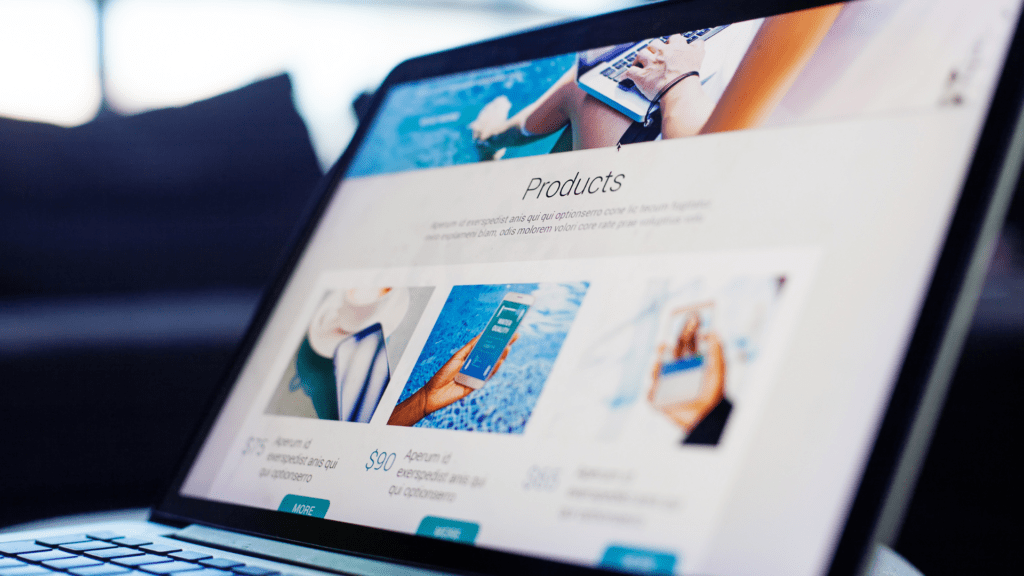Visual Communication
Welcome to Visual Communication, where design meets marketing excellence. In a world where information overload is the norm, the impact of visual appeal and functionality in multimedia marketing is paramount. We’re here to guide you through the essential elements of effective page layout and design, ensuring your marketing materials not only captivate your audience but drive success.
Unleash the Power of Visual Communication with Multimedia Marketing Group
Transforming Ideas into Impact
In a world filled with an avalanche of information, the ability to communicate effectively is more critical than ever. And in this dynamic landscape, visual communication stands out as a powerful, multifaceted tool that transcends words and resonates deeply with audiences.
What is Visual Communication?
Visual communication is the art of using images, colors, typography, and design to convey messages, ideas, and information. It goes beyond words, speaking a universal language that captivates, informs, and inspires. It’s about more than just aesthetics; it’s the essence of connecting with your audience on a profound level.

The Power of Visual Communication
- Clarity: Visuals bring clarity to complexity. When complex data needs to be presented, a well-crafted chart or infographic simplifies the message, making it understandable at a glance.
- Engagement: Visuals capture attention. They draw people in, telling stories and conveying messages with vivid imagery and striking design. Whether it’s a website, a marketing campaign, or an educational material, visuals are your secret weapon to engage and enthrall your audience.
- Memorability: We remember what we see. Visuals leave a lasting impression. A compelling image or a cleverly designed layout can etch your message into the memory of your audience, ensuring they don’t forget your brand, product, or idea.
- Universal Language: Visuals transcend borders and languages. They connect people across cultures and backgrounds. A powerful image can evoke emotions and create a sense of unity that words alone often struggle to achieve.
- Branding: Visual communication is the heart of branding. Your logo, color scheme, and design elements are the visual signatures that create a unique brand identity. They build trust and recognition, making your brand instantly familiar.
- Storytelling: Visuals are powerful storytellers. They can narrate a journey, explain a process, or evoke emotions. In a world where attention spans are short, visuals are your storytellers, captivating your audience and making your message unforgettable.
- Decision Making: In the business world, visuals drive decisions. Charts, graphs, and other visual representations of data empower professionals to make informed choices.
- Education: Visuals make learning exciting and effective. They transform education materials, making them more engaging and enhancing understanding. Whether in classrooms or online courses, visuals are indispensable tools for educators.
- Web and Social Media: On the digital frontier, visual content reigns supreme. Eye-catching visuals are essential for attracting and retaining online audiences in an age where clicks and scrolls are the currency of attention.
- Safety and Warning: Visual communication is crucial for safety and warning signs. It conveys critical information quickly and effectively, guiding us during emergencies and preventing accidents
Elevate Your Communication with Multimedia Marketing Group
At Multimedia Marketing Group, we’re here to help you harness the power of visual communication for your business. We understand that the impact of visuals goes beyond aesthetics—it’s about effective communication.
Our team of experts specializes in crafting visual strategies that elevate your brand, engage your audience, and drive results. Whether you’re a business seeking to enhance your brand, an educator striving to engage your students, or a communicator aiming to make a lasting impression, Multimedia Marketing Group is your ally.
Ready to harness the power of visual communication for your brand or project? Contact us today to see how our team can provide you with compelling visuals that resonate with your audience. Let’s turn your vision into a visual masterpiece together.

Understanding Human Visual Behavior
The journey of every user engaging with your multimedia marketing content, be it a website, email campaign, or social media advertisement, starts with understanding human visual behavior. It’s akin to reading the letter “F.”
The eye begins its scan at the top left corner, traverses horizontally, takes a brief dip downward, continues horizontally, and eventually gravitates down the left side of the page. This inherent scanning pattern serves as the blueprint for how multimedia marketing materials should be thoughtfully structured.
The Elements of Effective Page Layout and Design
To craft materials that resonate with your audience, you need to grasp the core principles of effective design.

Here are MMG’s fifteen key principles and elements for you to consider:
Establish a clear visual hierarchy to guide the viewer’s eye through the content.
Maintain equilibrium between different elements on the page.
Consistent alignment of text and images creates a cleaner appearance
Select readable fonts and pay attention to spacing.
Choose a color scheme that aligns with your brand and evokes emotions.
White space provides breathing room and focuses the viewer’s attention.
Maintain a consistent design throughout your marketing materials.
Use high-quality images and graphics that support your narrative.
Keep your design clean and uncluttered.
Group related elements together to create a logical flow.
Use contrast to make key elements stand out.
Repeating design elements creates unity.
Utilize grids for structured layout.
Ensure your design is accessible to all audiences.
Conduct user testing to gather feedback and make improvements.
Effective design is a combination of art and science. It should look appealing and serve its purpose by effectively conveying your message and engaging your target audience.
Importance of Proper Placement
Proper placement is where the magic begins. The call-to-action (CTA), the ultimate catalyst for user action, must be positioned strategically—preferably on the right side of the page, “above the fold.” The concept of “above the fold” ensures that your most vital content is instantly visible without scrolling.


Designing for the User's Eye
Designing for the user’s eye isn’t just about CTA placement; it’s about understanding where the eye naturally gravitates. The top-left and top-right quadrants are high-traffic areas where you need to make an impactful first impression. The central focus, often the middle-right side of the page, is another hotspot, capturing sustained attention. The left vertical bar is where the eye eventually settles, vital for more prolonged, in-depth reading.
The Thread That Weaves Together Understanding, Engagement, and Retention of Information
Visual communication is the silent hero in the realm of communication. It’s the language of images, colors, and design that plays a crucial role in our daily lives, sometimes without us even realizing it. In a world filled with information, visuals step in, removing ambiguity and making it easier for people to grasp and remember information.
Visuals engage our senses and emotions, making messages more appealing and memorable. In the realm of branding, visual communication is the cornerstone, creating a unique character and trust.
Visuals are powerful storytellers, narrating journeys, demonstrating processes, and evoking emotions that words alone often struggle to convey. In the grand tapestry of life, visual communication is the thread that weaves together understanding, engagement, and retention of information.


The Power of Visual Content in Effective Page Layout and Design
In the ever-evolving landscape of transmedia marketing, the way we arrange and present information on a page is the cornerstone of success. The dynamic interplay between content, design, and visuals forms the essence of engaging and persuasive marketing materials.
Visuals attract attention instantly, enhance engagement, tell compelling stories, and lead to faster comprehension and shareability. They establish brand identity, create a mobile-friendly experience, and transform education, safety, advertising, and marketing.
Integrating Visuals into Effective Page Layout and Design
Incorporating visuals into effective page layout and design is a journey toward capturing attention, engaging users, and inspiring action. Visuals can convey information, evoke emotions, tell stories, and guide users to take action.
By following the principles of effective design and understanding human visual behavior, you can harness the power of visuals to create multimedia marketing materials that engage your audience and drive your marketing goals.
Small, strategic design changes can have a significant impact on the success of your campaigns. Explore our case studies to see how these principles can yield tangible results in various marketing scenarios.
Case Studies: The Impact of Visual Content



Let’s delve into some real-world case studies to understand how effective page layout and design, enriched with visuals, transformed marketing campaigns:
MMG Case Study 1: E-commerce Website Conversion Boost
The difference between success and stagnation can often be attributed to small, strategic design choices. One major e-commerce website decided to put this theory to the test and witnessed remarkable results. By strategically positioning the “Buy Now” call-to-action button in the top-right quadrant of its landing page, they achieved a remarkable 30% increase in conversions within a month. This simple design change capitalized on user behavior patterns, guiding their eyes toward the desired action.

MMG Case Study 2: Social Media Advertising
The success of effective page layout and design isn’t limited to e-commerce websites. Social media advertising is another domain where understanding user behavior and design principles can significantly impact the success of marketing campaigns. A digital marketing agency tested different ad designs for a fitness client. The ad with the CTA positioned in the middle-right side outperformed the traditional layout, garnering 40% more click-throughs and a 25% higher conversion rate.

MMG Case Study 3: Email Marketing Campaign Optimization
Email marketing remains a cornerstone of digital marketing strategies. In this case, a retail company sought to maximize the impact of their email campaigns by optimizing their email design. After implementing design changes based on the principles of effective design, including a prominent and visually appealing call-to-action button at the top-right corner of the email, aligned with the user’s natural scanning pattern, they achieved a significant improvement in performance. Open rates increased by 20%, click-through rates saw a 30% boost, and the conversion rate surged by an impressive 40%.

MMG Case Study 4: Mobile App User Onboarding
A startup designed a mobile app with a visual progress bar and cues in the top-right quadrant of the screen, aligning with the user’s natural scanning pattern. This design change led to a 25% reduction in drop-off rates during user onboarding and a 25% increase in the number of users who completed the onboarding process and actively engaged with the app. This translated to higher user retention and a more successful mobile app overall.

These case studies emphasize the real-world results achieved when marketing professionals understand and apply the principles of effective page layout and design enriched with visuals. Small, well-thought-out design changes can have a major impact on the success of marketing campaigns, regardless of the industry or platform. This reaffirms the value of following the principles of effective page layout and design in multimedia marketing.
The Visual Advantage in Multimedia Marketing & Communication
The power of effective page layout and design is not confined to a specific platform or industry. It has the potential to transform multimedia marketing campaigns, websites, mobile apps, videos, and various digital endeavors by understanding user behavior and designing with intention.
Visual content isn’t merely a supplement—it’s a fundamental pillar of design and an essential tool for capturing and sustaining your audience’s attention, ultimately driving your marketing goals. By incorporating visuals into your marketing materials with an understanding of user behavior and design principles, you can create more engaging and persuasive campaigns that resonate with your audience and drive the desired results.